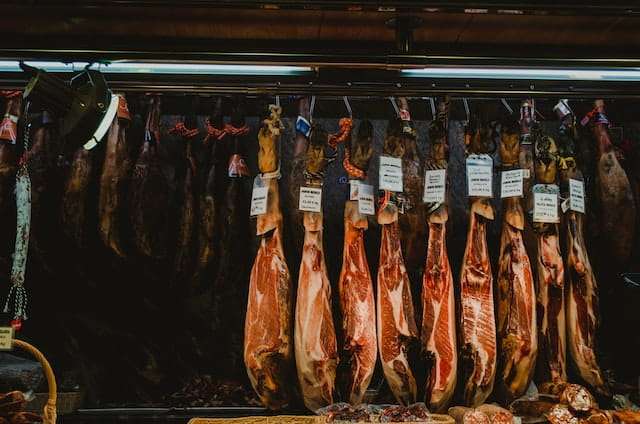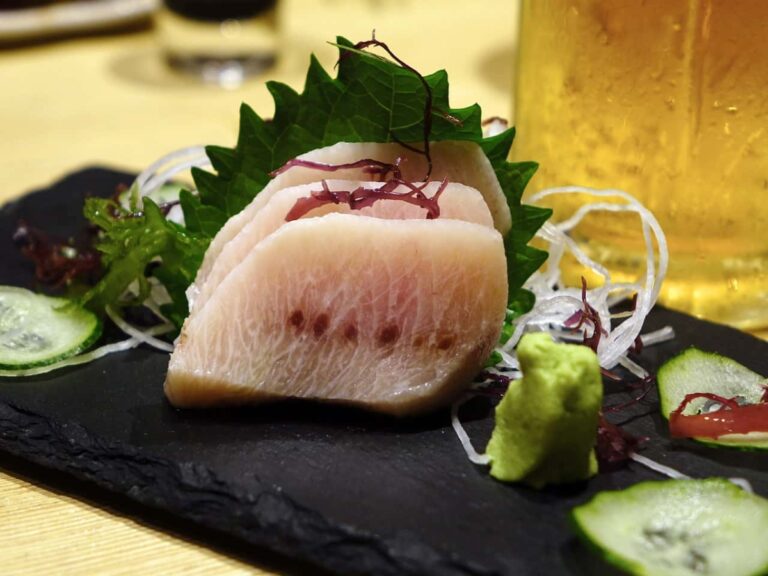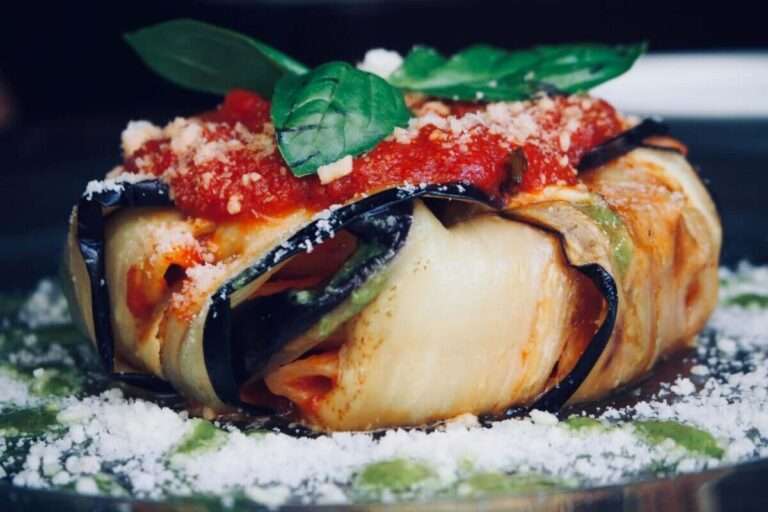34 top cured ham and roast kitchen insights
Did you know that an Iberian “Manchado de Jabugo” ham from Jabugo, Spain, has the reputation of being the most expensive leg of ham that can be purchased commercially?
- It is now being distributed by Dehesa Malaga in Spain, and the manufacturer recommends pricing it at €4,100 (about $4,620.28). After being reared and cured for three years, the legs of ham are then matured for up to six years in a traditional curing cellar before being cut and put up for sale.
- Although it was outlawed by religious decree in certain parts of the world, ham was consumed widely throughout Europe and Asia and is considered one of the first forms of meat consumed by civilised peoples. There are allegations that the Chinese were the first people to discuss the manufacturing of cured ham. Some accounts place the origin of the cured pig leg in China about 4900 B.C.
- Larousse Gastronomique claims an origin from Gaul. In his works, Marcus Terentius Varro makes reference to an import commerce from Gaul, which is proof that by the time of the Roman era, it had already achieved a high level of success. Around 160 B.C., Cato the Elder included a passage in his work titled “De Agri Cultura” in which he discussed the “salting of hams.”
- From its origins in Germanic, where it meant “crooked,” the term “ham” was borrowed into Old English, where it took on the sense of the hollow of the knee or the bend of the knee. Around the 15th century, it became to be understood to refer to the leg of an animal.

Ham nutrition values and health benefits
- Ham is a good source of protein while also being low in carbs, fat, and fibre. It has a low calorie count when ingested on its own. Two ounces (57 grammes) of ham may supply up to 76% of the recommended daily value of selenium, depending on the kind of ham. Selenium is an essential nutrient because it aids in reproduction, DNA synthesis, and viral defence.
- Iron, thiamine, and other B vitamins are more abundant in pork products like ham than in poultry or fish. Contrarily, other red meats like beef could contain more nutrients than pork. The other reason ham is considered a complete protein is because it contains all nine essential amino acids. Proteins rely on amino acids for their structure, but amino acids also play critical roles in processes including metabolism, gene expression, and cellular communication.
- In addition, this popular red meat is loaded with beneficial minerals like phosphorus, zinc, and potassium, which work together to boost energy levels, fight off infections, and keep your heart in tip-top shape. More specifically, the chemicals carnosine, choline, and coenzyme Q10, found in ham and other meats, assist your body generate energy and communicate with its cells.
- Protein, vitamins, and other healthy nutrients may all be found in ham. Foremost among them are the elements selenium, carnosine, choline, and coenzyme Q10. Ham and other pig products are considered excellent protein sources due to their high amino acid content. Consumption of these proteins on a daily basis may be particularly important for the maintenance of muscle mass and strength in the elderly.
- Black Iberian pigs are given a diet of grains and maize before being permitted to graze on acorns, grass, and plants for many months before being slaughtered and turned into Jamón Ibérico, a kind of Iberian ham popular in Spain. There is new evidence indicating this specific kind of ham does not increase your risk of acquiring chronic diseases like high blood pressure and heart disease when compared to other types of ham.
- Some people limit or forgo eating ham because of its high sodium and preservative content. The most common ways of preparing ham, curing and smoking, produce much higher levels of several carcinogens compared to other methods. In addition, the amounts of these compounds in ham increase when it is reheated using high-temperature cooking methods like grilling, pan-frying, or barbecuing.
- Research has yielded mixed results on whether or not eating ham raises your risk of acquiring other chronic diseases, despite the well-established link between processed meat and cancer risk. People who have a higher than average risk of becoming sick from eating contaminated food should probably avoid eating ham. These groups include infants and toddlers, seniors, persons with impaired immune systems, and expectant mothers.
- Ham is a source of protein that is low in calories while still being rich in nutrients and may help in the process of repairing muscle mass. On the other hand, there is some evidence that suggests that eating processed meats on a regular basis, such as ham, may increase your risk of acquiring some cancers. As a result of this, the most prudent course of action for maintaining a healthy diet is to limit one’s intake and focus instead on fresh, less processed forms of food.
100g of cured ham has 145 calories (606kj), 21g protein, 6g fat, and 1.5g carbs, including 0g fibre.

How to store ham and how to buy them
- There are really only two places that may be used to store ham, and those are the refrigerator and the freezer. Although I am aware that there are certain specialised goods, like as country ham, that are occasionally marketed without refrigeration and store well at room temperature, the great majority of ham products need refrigeration in order to be consumed safely. It does not matter what kind of ham you are working with, whether it has been cured or not, whether it has been cooked or not, or whether it has been sliced or not; the same few fundamental criteria apply.
- Keep the meat well-wrapped at all times, since this is the first and most important step. Ham that is sold in packages is often vacuum sealed, or at the absolute least, packed in a way that ensures it is airtight. Additionally, even if you purchase sliced lunch meat from the deli counter, it will often be appropriately wrapped for you.
- After you have opened the packaging, if you find that you are unable to readily reseal it, you should consider placing the ham in a container that is airtight or a freezer bag. These help to retain the ham’s natural moisture and aroma while also preventing it from absorbing any odours that may be present in the refrigerator. If you want the meat to last as long as possible, store it in the furthest part of the refrigerator and put it back there as soon as you have chopped off as much as you need.
- It is not necessary to refrigerate canned ham that is not marketed chilled since it may be consumed at room temperature. The tins should be kept in a cool location, such as a pantry or kitchen cabinet, for optimal storage. Once you have opened the can, put any leftovers in the refrigerator to keep them fresh. Be sure that they are well covered so that the fragrance does not permeate the whole refrigerator and the meat does not get dry.
- Take care of any further preparation that your ham needs before it can be eaten (for example, if it is raw and has to be cooked), then do that before you freeze it. You will not have to worry about anything in the future since your defrosted ham will be ready to consume in this manner, and you will not have to worry about anything else either. In addition, freezing might cause a little alteration in the texture of the meat, which means that a ham that has been frozen and thawed before being cooked would probably not come out as well.
- The next step is to consider the different serving sizes. If you have a full large ham on hand, it is best to cut it up into many smaller pieces so that each one will be sufficient for a few days’ worth of eating. You may be certain that it will not go bad if you do it this way. You may want to consider slicing the ham before freezing it if you plan on using it mostly for sandwiches. This ensures that it will be operational as soon as it has been defrosted. If you purchased a large quantity of sliced ham from the deli, you should separate it into multiple smaller portions as well.
- The quality of the ham will typically be preserved for around two weeks when it is vacuum packed. On the packaging, there is almost usually a date indicating when it should be used. Although the ham should be OK if left unopened for a few further days beyond the expiration date, that is pretty much it. There are a few exceptions to the two-week rule, such as prosciutto, which may sometimes be kept for more than two months, although this is the exception rather than the norm.
- Ham that has been canned often has a “best-by” date on the label, although it is possible for it to maintain its quality for many weeks after that date has passed. After the can has been opened, the ham should be consumed within three to five days.

Cooking techniques, secrets, and tips from the kitchen
- There are three distinct types of ham on the market today: fresh, cured, and smoked. The cured pork leg is what is meant by the term “ham.” Unsmoked and uncured pig leg is what we mean when we say “fresh ham.” If the product uses fresh ham, the word “fresh” will appear in the name. Definition: “fresh” means the product has not been preserved in any way. The term “turkey ham” is often used to describe a packaged and canned meat product that is cured from turkey thighs. Turkey ham is properly defined as the “cured meat from the thighs of a turkey.”
- If you are going to start by preparing your ham in water, poaching is the way to go instead of boiling.
- Ham becomes rough and stringy when boiled; for a more tender result, simmer it at a temperature of no more than 85 degrees Fahrenheit.
- Cooking meat at a low temperature for a long time helps to retain moisture, making it the recommended method.
- Whenever you cook ham, make sure to save aside some of the cooking liquid. Because of its adaptability, ham may serve many functions.
- Vegetables cooked in ham stock instead of water boil more quickly and retain more of their nutrients, making it ideal for use in soups, braises, and braised meats, but it also works just fine when used alone.
- The effects of cooking sprouts in ham stock rather than boiling water are spectacular. Make sure it has a good balance of flavours, however, and is not too salty or strong.
- While glazes are necessary, I find that the ham benefits from an additional layer of flavour from a dry rub.
- The ham would also taste great with some ground Christmassy spices like cinnamon, cloves, or star anise or crushing fresh ginger into a fine, dry powder to sprinkle over the top before baking.
- Sichuan peppercorns, cracked black and white peppercorns, and even smoked paprika and cumin may be used to create a complex flavour profile.
- In terms of ingredients, you have a lot of leeway. Some people like to use cola, while others like a mixture of golden syrup and stock.
- In my opinion, the simplest approach is to utilise liquid honey. Honey cooks, reduces, and caramelises while being poured all over the ham before being roasted.
- I like cooking a leg of ham on the bone because it helps the meat retain its shape and moisture when slow cooking, my preferred method of preparation. If you can not get it, rolled and boneless joints will suffice instead; just cook them carefully so they do not dry out like a piece of pig. A few of ham hocks may be cooked in place of an entire leg of ham, and they will have the same effect and flavour. As the ham cooks, the glaze will gradually evaporate, so make sure to baste it every 10 to 15 minutes.
- Get the grill hot enough so the meat can be seared quickly, creating a flavourful coating that will make grilling a pleasure.
- To keep the meat from sticking to the racks, use clean racks that have been sprayed with vegetable oil or a non-stick vegetable oil spray.
- The ham slices will cook more evenly if you trim the fat from the edges at 1-inch to 1-and-a-half-inch intervals.
- Ham should not be flipped with a fork while it cooks. The piercing triggers the flow of juices. For proper manipulation, tongs are recommended.
- Leave some space on the charcoal grill unfilled with coals so that the meat may be moved there if a flare-up occurs or if some of it cooks too quickly. Reduce the heat on one of the gas grill burners to its lowest level.
- Make sure the meat is cooked all the way through by checking the temperature in its centre with a meat thermometer. A thermometer inserted into the thickest portion of a raw or partially cooked ham should read 160 degrees Fahrenheit, while a fully cooked ham should register 140 degrees Fahrenheit. To avoid getting an inaccurate reading, avoid touching the thermometer’s base to any bones when you put it into the meat to check for doneness. The flesh may be easily pierced with a meat fork and will quickly yield. After a sufficient amount of time has passed, the flesh will have separated from the bones, making it much simpler to move those with larger bones.
- Ham goes well with many different kinds of vegetables and grains, such as potatoes, green beans, sweet potatoes, squash, asparagus, apples, honey, carrots, rice, and various types of herbs, such as sage and chives, to name just a few of the possible combinations.

History of ham from the beginning until today
- “Ham” stems from the Old English word “hamm,” which refers to pig leg meat. China claimed to have cured a hog limb around 4900 B.C. Romans, who learned the method from the Chinese, popularised ham throughout ancient Europe. A second-century recipe for ham with figs, a traditional meal at ancient feasts, has survived. Gaul’s developed Bayonne, Black Forest, and Westphalian hams.
- Hernando de Soto landed in Florida in 1539 with 13 pigs, which became the breeding stock for the U.S. pork industry. In a few years, he had 700 pigs.
- By the 1700s, most colonial farmers reared pigs. Long-lasting salt pork and bacon were early American staples. The expression “high on the hog” comes from the placement of the ham on the top of the pig (as opposed to the belly, shanks, and trotters), and it refers to a lavish lifestyle characterised by the eating of the best slices of pork and other delicacies.
- George A. Hormel & Company introduced canned ham in 1926 and Spam in 1937. “Country ham” refers to a method of dry-curing and smoking ham developed in rural Virginia, Kentucky, and other states in 1944.
- Wet-cured city hams are injected or submerged in brine before being smoked. Spiral-cut hams are popular during Easter since they are fully cooked. Country hams must be cleaned and cooked despite being preserved. Raw, “fresh” hams may be cured, smoked, or cooked at home. When cooked, fresh ham is less salty and smokey than processed ham, and it tastes more like a loin roast or chop when not cured.
- Ham is commonly sliced and used as a filler in sandwiches, such as the ham sandwich and the ham and cheese sandwich. Croque-monsieur and Cubano are additional toasted variations. In the US, it is a popular deep dish pizza topping.
- Gammon is a whole or diced cured hog leg that must be cooked. Britain loves it. Gammons and bacon were traditionally cured and served with potatoes. Cooked gammon is ham and in the UK, are common for Christmas roasts.







